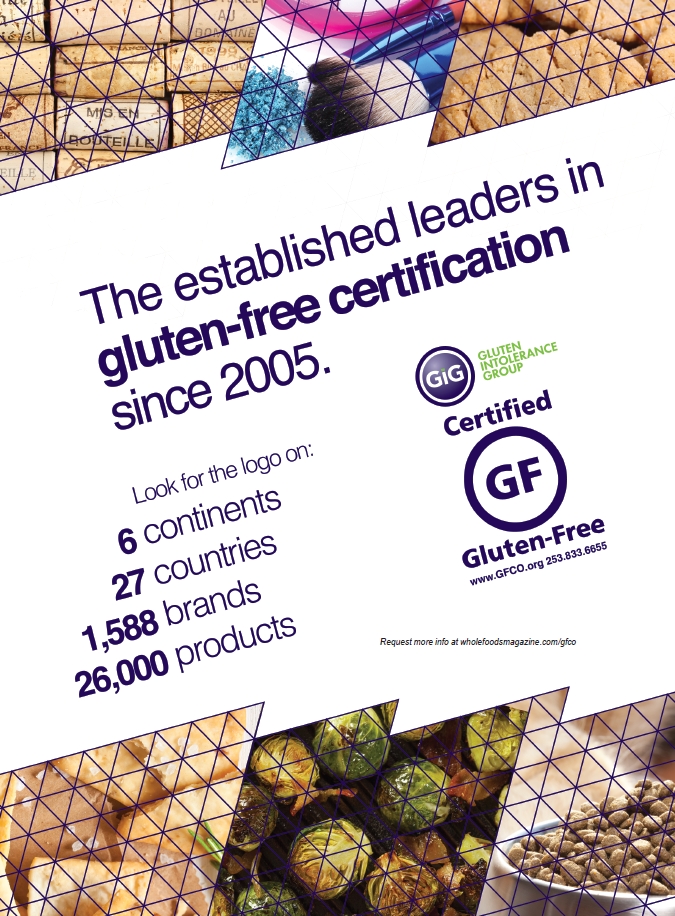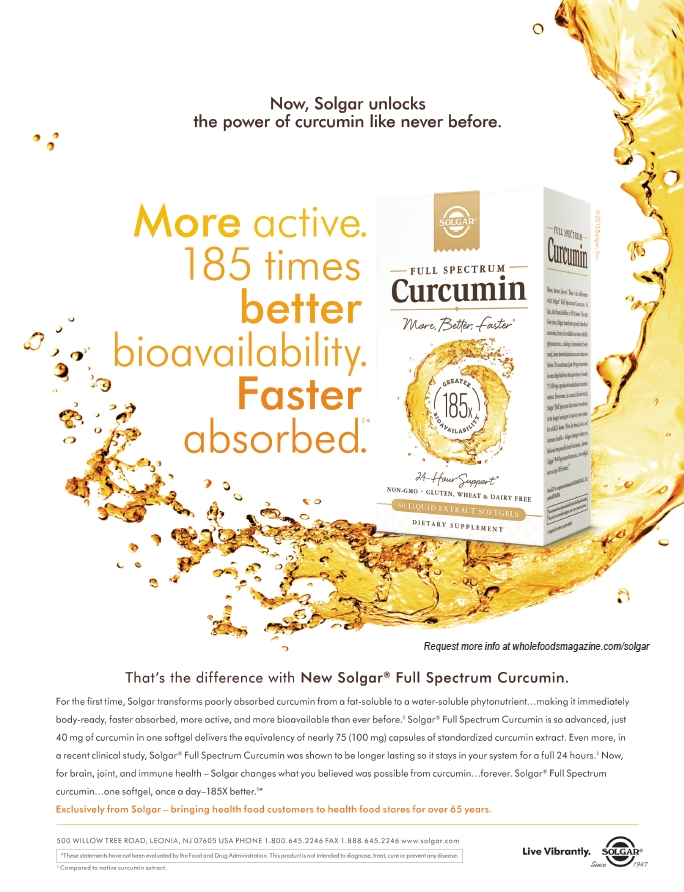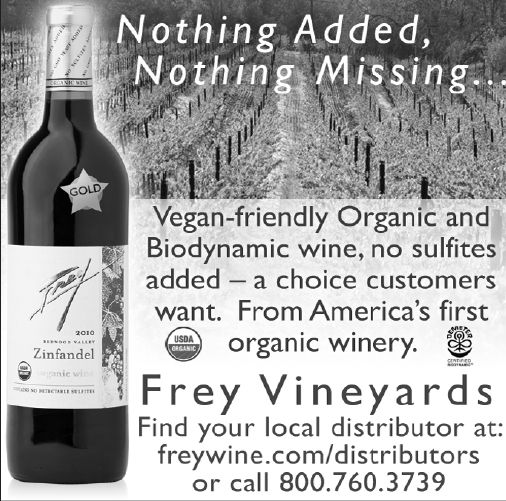It’s no secret that functional foods comprise a steadily rising category, with more and more consumers seeking to improve their overall health through their food. However, as the category both expands and improves, new factors and new demographics are changing how functional foods are perceived, not just on the shelf, but also in all aspects of the manufacturing process. When they were introduced in the 1980s, the original purpose of functional foods was to go beyond just being generally nutritious and contain nutrients targeted at supporting specific health functions, but consumer demands are stretching this definition (1). As a result, companies are going to great lengths to stay ahead of the curve.
Good Taste
It’s a bit ironic that one current trend affecting the perception of functional foods is one of the first things you think about when the topic of foods comes up: taste. Amy Lotker, owner and executive vice president of marketing and sales at Better 4U Foods, Delray Beach, FL, explains that “companies need to  understand that while there was a time when health-conscious consumers were willing to sacrifice flavor for the health benefits of functional foods, that time has long passed for a number of reasons.” The main reason she gives for this phenomenon is that the concept of functional foods has gone “mainstream,” but how exactly that factors into an emphasis on taste is more of a “chicken or the egg scenario.” As she puts it, some believe consumer demand is accelerating the development of better-tasting functional foods, while others believe that strides toward better taste in functional foods are drawing people in.
understand that while there was a time when health-conscious consumers were willing to sacrifice flavor for the health benefits of functional foods, that time has long passed for a number of reasons.” The main reason she gives for this phenomenon is that the concept of functional foods has gone “mainstream,” but how exactly that factors into an emphasis on taste is more of a “chicken or the egg scenario.” As she puts it, some believe consumer demand is accelerating the development of better-tasting functional foods, while others believe that strides toward better taste in functional foods are drawing people in.
Valerie Popelka, chief marketing officer and founder of Kuli Kuli, Oakland, CA, says her company witnessed this trend in action firsthand when developing one of its products, a moringa snack bar. Initially, the belief was that consumers would be drawn to the nutritional content of the moringa, so packaging was designed to highlight said nutrients. Instead, she found that in consumer tests, “the packaging that consumers liked the most was brightly colored and offered the most appetite appeal with flavor being at the top of the communication hierarchy.” As a result, she says that her company is currently redoing its packaging to strike a better balance between these two staples.
To add to the taste conundrum, Pierre Donck, regional products manager at BENEO, Morris Plains, NJ, reminds us that “texture is an important criteria for consumers who don’t want to sacrifice on indulgence when choosing healthy foods.”
While it is a near-universal agreement that taste has become a very important consideration, there are a variety of different approaches companies are taking to ensure that consumers are getting the best of both worlds. Elyse Lovett, MBA, MS, marketing manager at Kyowa Hakko USA, New York, NY, suggests, “companies should be paying attention to bold, new innovative flavors from cultures around the world” when coming up with recipes for functional food items.
 Another popular concept according to Kipp Stroden, CEO of Essential Living Foods, Culver City, CA, is mixing “tasty” ingredients with some that may be healthful but not necessarily as palatable, a technique he considers to be viable due to the sheer volume of “nutrient-dense plants on the planet.” An example he uses is combining freeze-dried strawberries or raspberries with ingredients like ashwagandha or camu camu. “By combining them, you would have a mix of ‘good’ tasting and ‘bad’ tasting antioxidant ingredients that combine to make an overall ‘good’ flavor profile,” he explains.
Another popular concept according to Kipp Stroden, CEO of Essential Living Foods, Culver City, CA, is mixing “tasty” ingredients with some that may be healthful but not necessarily as palatable, a technique he considers to be viable due to the sheer volume of “nutrient-dense plants on the planet.” An example he uses is combining freeze-dried strawberries or raspberries with ingredients like ashwagandha or camu camu. “By combining them, you would have a mix of ‘good’ tasting and ‘bad’ tasting antioxidant ingredients that combine to make an overall ‘good’ flavor profile,” he explains.
Mic LeBel, communications manager at Navitas Naturals, Novato, CA, agrees with the idea of mixing the familiar with the new to draw consumers in. He cites cashews, pumpkin seeds and almonds as “common nutritious foods that people already know and love” and can make great accompaniments for more unfamiliar options, such as maca, to be introduced into newcomers’ diets.
Sometimes, the opportunity presents itself for both function and taste to be improved upon at the same time. Sam Wylde, III, president of Ener-G Foods, Inc., Seattle, WA, says certain choices can both improve taste and “enable the manufacturer to make permitted health claims.” He lists “use of herbs/spices, replacing high-fructose corn syrup with other sweeteners, removing trans-fats, removing cholesterol, substituting resistant starches for other starches and many other improvements” as potential ways for companies to improve the taste of their products while keeping the purpose of functional foods at the forefront. Donck suggests that companies seeking these healthy alternatives “should opt for functional ingredients that have a similar behavior in the food matrix including taste and texture.” For traditional sugar replacements, he suggests ingredients like chicory fiber roots or isomalt. Sometimes, this can help with the texture issue as well, with inulin and rice starches being applicable to fat-reduced dairy products while still keeping a creamy texture and mouthfeel.
When it comes to the subject of texture, “much is left to individual interpretation,” says Dan Grazaitis, senior food technologist at TIC Gums, White Marsh, MD. This is a double-edged-sword, in that while there are many possibilities, narrowing down an ideal texture during the formulation process can be difficult, something that has only become more difficult now due to raised consumer expectations regarding texture and taste. To combat this, his company has created an extensive collection of sensory terms and examples regarding texture designed for communication during the product development process. By dividing facets of texture into visual, mechanical and oral categories, this type of attention to detail helps ensure that consumers get the exact type of texture that they are looking for.
Function Over Form?
While the demand for taste is relatively new, make no mistake—people are ultimately turning to functional foods to improve their health, and as the consumer base becomes more educated about their nutritional needs, new nutrients are being sought out as well. Kris Buchanan, founder and CEO of GoodOnYa, Encinitas, CA, says that magnesium is a hot trend right now, something concurrent with the fact that it is currently the number one mineral deficiency in the United States. Other nutrients she says consumers are looking for are vitamins A, C, E and D, along with blends of essential minerals, partially because “our soil and processed food lacks them.” Lovett adds that ingredients associated with performance enhancement like L-glutamine and L-alanine are also popular choices. Stroden expands the list even further, with antioxidants, essential fatty acids, protein and other top nutrients he sees customers searching for.
When it comes to functional foods, though, the nutrient content itself is one half of giving the consumer what they want. The other side to this coin is bioavailability, which ensures that this content actually gets where it needs to go to support various health functions. Daniel Sullivan, founder and CEO of Temple  Turmeric, New York, NY, defines bioavailability as “the ability of your body to absorb a certain nutrient. The fact that it’s emerging as an important concern among consumers further speaks to the magnitude of this evolution in consciousness around how food is meant to nourish us.” Wylde adds that while bioavailability means “absorbed” to most people, it’s also important to be specific. “It can mean absorbed into our blood, absorbed into our digestive systems, ‘absorbed’ by good microflora in our intestines, and so on. I consider all of these as providing ‘bioavailability,’” he states.
Turmeric, New York, NY, defines bioavailability as “the ability of your body to absorb a certain nutrient. The fact that it’s emerging as an important concern among consumers further speaks to the magnitude of this evolution in consciousness around how food is meant to nourish us.” Wylde adds that while bioavailability means “absorbed” to most people, it’s also important to be specific. “It can mean absorbed into our blood, absorbed into our digestive systems, ‘absorbed’ by good microflora in our intestines, and so on. I consider all of these as providing ‘bioavailability,’” he states.
While many companies know bioavailability to be important in the functional foods conversation, again, there are differing methods used to approach it. Some companies fortify their foods directly with certain nutrients, creating the fortified foods category, but as Sullivan says, “bioavailability is something worth considering for any product made with whole food ingredients, not just those that are fortified.” Many seem to be following this lead.
Lotker says that while her company’s gluten-free pizzas may not be fortified directly, both the crust and topping ingredients are selected with nutritional benefits in mind. For example, whole grain pizza crusts are used for their folic acid and B vitamin nutrients content; and extra-virgin olive oil is used for its antioxidant content. However, she also sees “growth in retailers favoring products with fortified ingredients, such as vitamin C, zinc, folic acid, calcium, iron and B vitamins—particularly in the cereals category.” Sometimes, certain consumer categories also demand unique approaches. Wylde says his company enriches several of its gluten-free breads due to the fact that “celiacs tend to not absorb vitamins/minerals well.”
In addition to bioavailabilty, some functional foods can also be geared toward specific bioactivities. Hartley Pond, senior vice president of VDF/FutureCeuticals, Momence, IL, cites a study of a patented fruit and vegetable powder blend from his company where a 100-mg dose reduced reactive oxygen species (ROS) in vivo in healthy humans, while also increasing nitric oxide levels by 65%. He says that fruit and vegetable products are what he sees consumers going for when they are looking for something specific.
These facts and trends all orbit around one central shift in the perception of functional foods: people are looking for healthier food to add to their lifestyles. While this sounds like an obvious point at first, it does show some change from what people were looking for in the past. A February 2015 report released by Packaged Facts said that while one-third of adults may be seeking to lose weight, they are shunning products marketed specifically for weight loss, forcing brands to reposition themselves toward a general wellness focus (2).
Todd Beckman, cofounder and COO of GoodBelly, Boulder, CO, says that “claiming your product aids in weight loss is a slippery slope, and one that has been met with a fair amount of criticism over the years because it’s hard to deliver. There are too many variables that come into play.” He also adds Food and Drug Administration regulation concerns to the mix, explaining that “those guidelines become much more stringent once you lay claim to delivering on a weight-loss claim.” As Pond puts it, the new functional food consumer “is mainly driven by healthy ingredient choices first.”
|
A Gut Feeling Several experts see digestive health, a category that can traditionally be confusing for first-time consumers, as a potential area for growth for functional foods. The main item when discussing digestive health in functional foods is probiotics, beneficial bacteria and yeasts designed to support the digestive system. Todd Beckman, cofounder and COO of GoodBelly, Boulder, CO, cites recent reports predicting the global probiotic ingredients market to reach $36.7 billion by 2018, with a compound annual growth rate of 6.2 percent (1). At the same time, though, he explains, “people are still learning probiotics 101—what they are, how they can benefit your health, how to incorporate them into your diet, etc. It’s our job to feed them this information; it’s our job to help them become more informed and to break down any barriers to that path-to-purchase.” The idea of breaking these barriers of confusion is so important because “the digestive system is ground zero for many of the body’s vital functions,” says Michael Bush, senior vice president of Ganeden Biotech, Mayfield Heights, OH. He adds that beyond areas like digestive and immune support, which probiotics are also associated with, research is emerging showing potential applications for categories like recovery, cardiac health and oral health. Functional foods are an excellent option for people who may look to further their health with probiotics but are “no longer interested in taking another pill,” explains Bush. In order to do this, education has to be combined with flavors people already enjoy. Beckman says that flavors like pomegranate and acai strike the perfect chord of “familiar, on-trend and delicious.” His company also offers probiotic shots to appeal to people with limited time who are still looking to improve their health. And, as is seen with functional foods on the whole, using non-GMO, dairy-free, soy-free, vegan and kosher ingredients can also attend to the growing amount of consumers with food sensitivities. Reference 1. BCC Research, “The Probiotics Market: Ingredients, Supplements, Foods,” www.reportbuyer.com/product/96621/the-probiotics-market-ingredients-supplements-foods.html., accessed 5/22/15. |
While we’ve established that the new consumer may have certain ingredient choices in mind now when they reach for the shelf, other claims beyond weight loss are catching eyes as well. “Performance enhancing, heart health, cognitive health, and immune/energy health have become major functional claims that consumers look for on their packaging,” says Lovett. Stroden also sees “an emerging trend of consumers wanting specific functional solutions in various product SKUs.” Detox, athletic performance, digestion, men’s health and women’s health are among the benefits he sees people looking for.
New Faces In Familiar Places
While functional food consumers are beginning to look for new things out of the category, it would be remiss to forget that there are also new consumers as well, and companies are making changes in both product and marketing to match their desires. One demographic that every functional food company should have on their mind is Millennials, who are currently the most likely to believe that functional foods can be used in place of some medicines. In general, this group is also more likely to put healthfulness in mind with their food choices, with fresh being one of the top criteria (3). Beckman notes that Millennial appeal is particularly important because “Millennials not only seek trends, but with consistent exposure to new products and fads, often set those trends, too.”
For functional food makers looking to make their products more appealing to the Millennial consumer base, one of the best places to start is portability. Lovett describes Millennials as “mobile hounds…we want products now, we want them fast, we want them to taste good and we want a healthy benefit to go along with them.” Popelka explains that the reason why convenience is so important to Millennials is because they seek things they “enjoy and easily incorporate into their lifestyles. They grew up in a world of instant gratification, so offering products that are convenient and delicious, in addition to healthy, help us capture this market.”
The idea of healthier choices as a part of a better lifestyle is something that we not only see beyond the Millennial demographic, but outside of the functional food category as well. The Millennial category often draws special attention, though, because it’s growing so quickly. Because of this, LeBel says that one of the most important functional trends is snacking, with “grab-and-go nutrition” fitting snugly into what Millennials and an increasing number of consumers from other generations are looking for. The emphasis on lifestyle support also factors into some of the health functions they are looking for from functional foods. Lovett says Millennials are looking to support “improved focus and concentration, extra energy for their day-to-day activities and disease specific prevention.”
Along with this desire for easier lifestyle integration while refusing to sacrifice quality comes a lower tolerance for artificial ingredients, says Lotker, who also sees Millennials as “driving growth in the ‘free-from’ category—which includes gluten-free and dairy-free offerings.” Donck adds lower calories and reduced sugar as other things that Millennials are looking for when they reach for the shelf, while still “providing the necessary energy to cope with ever-growing hectic lifestyles.”
Creating a lifestyle-friendly product is only part of the method to draw Millennial dollars, though. Pond says that “Millennials bring a healthy skepticism to determining brand and purchasing choices. Millennials want authentic, healthy foods with ingredient declarations that are short, natural, simple and, above all, honest.” In the functional food category, where consumers are often purchasing with a particular health function or nutrient deficiency in mind, keeping things as transparent and honest as possible is paramount. Buchanan speculates that this may factor in to the rejection of weight-loss branding, and adds that her company’s products “just talk about the function of hydration and the nourishment of real food” as an advertising emphasis.
Sullivan reminds us that “as the future generation, Millennials tend to be early adopters when it comes to anything new—whether it’s food, technology or fashion. However, the functional beverage category is  poised to reach $37 billion by 2019, and there are many different types of consumers fueling this growth (4).” If we factor the rest of the functional food category into these figures, it becomes clear that other demographics are interested in functional foods and showing it with their wallets. Sullivan names working professionals, parents, active consumers and Baby Boomers as some of the other consumer groups he sees buying in. Wylde adds ethnic demographics to the mix, saying, “Hispanics, the fastest growing ethnic group in the United States have some unique needs.”
poised to reach $37 billion by 2019, and there are many different types of consumers fueling this growth (4).” If we factor the rest of the functional food category into these figures, it becomes clear that other demographics are interested in functional foods and showing it with their wallets. Sullivan names working professionals, parents, active consumers and Baby Boomers as some of the other consumer groups he sees buying in. Wylde adds ethnic demographics to the mix, saying, “Hispanics, the fastest growing ethnic group in the United States have some unique needs.”
Perhaps while Millennials may be ahead of the curve when it comes to their interest in functional foods, what they are looking for may not be that unique. According to Pond, many of the things that Millennials are demanding, like simplicity and transparency, are “choices that are also highly appealing to other demographics, including the Baby Boomers.” Donck adds that “Scientific studies have shown that tactics for weight control and healthy nutrition are important for all demographics—children and adults, overweight individuals as well as those with normal weight.” With interest from these groups anticipated to grow, Michael Bush, senior vice president, of Ganeden Biotech, Mayfield Heights, OH, says that “functional food manufacturers should take advantage by offering applications that resonate with each age group individually; such as digestive support for Baby Boomers, on-the-go products for Gen X and lifestyle friendly products for Millennials.“
Your Next Meal?
With this rise of consumer interest in functional foods and more to come, many experts are speculating on what the hot items to come are in this category. Beckman says that while predicting changes in this market can be difficult, as it “is truly ever-changing and is affected by things like ingredient trends, emerging health concerns, etc. However, we are seeing more and more consumers going back to simplified ingredients they know and recognize.” He also predicts digestive health and allergen-free as potential products that could become popular in the future. Buchanan sees minerals as a future trend, while Lotker looks to heart health as “a category that’s bound to become more prominent once again.” Grazaitis thinks in an even broader scope for the future, seeing a “need for hydrocolloids in products to satisfy consumers’ expectations of texture, taste and shelf stability.” He explains that this need may stem from a potential growth in packaged goods in the future. Other functional food categories that could see potential future growth are cognitive health, blood glucose management and antioxidants. WF
References
1. J.A. Westrate et.al., “Functional Foods, Trends and Future.” Brit. J. Nutr., 88, 233–235 (2002).
2. Packaged Facts, Functional Foods: Key Trends by Product Categories and Benefits. www.packagedfacts.com/Functional-Foods-Key-8540424, accessed 5/21/15.
3. A.E. Sloan, “The Top Ten Functional Food Trends,” Food Technol., 68(4), 2014.
Published in WholeFoods Magazine, July 2015









